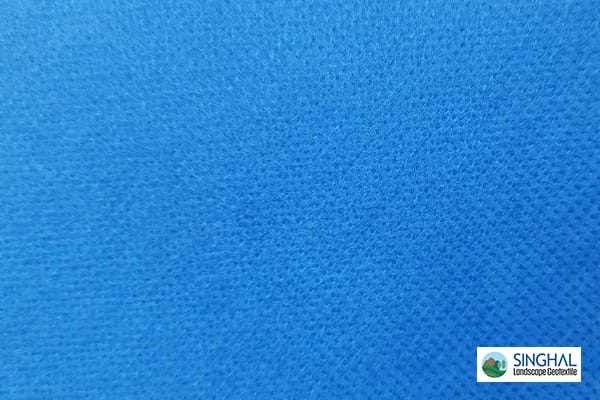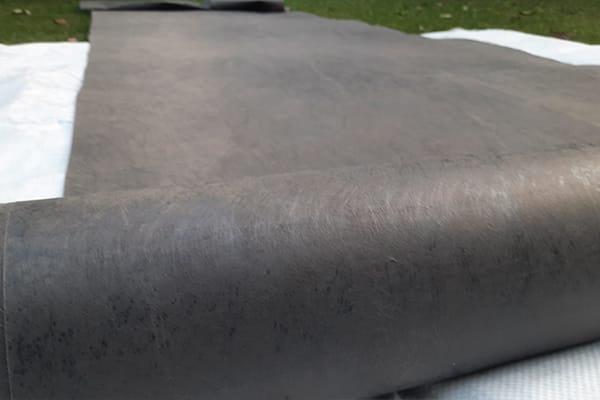Non woven medical grade fabric Manufacturer
Non woven medical grade fabric is used in healthcare for filtration, sterility, and disposability. Made from synthetics like polypropylene or polyester, it’s produced via spunbond, meltblown, or SMS for medical and hygiene use. Here’s a breakdown of the key features, types, and applications of medical-grade non-woven fabric:
Singhal Landscape Geotextile – leading manufacturer of medical-grade nonwoven fabric ensures high-quality, moisture-resistant, and hygienic materials for healthcare applications, prioritizing durability and safety.
Key Features of Medical Grade Non-Woven Fabric
Bacterial Filtration Efficiency (BFE)
High BFE (≥95% or ≥99%) is crucial for bacterial and viral contamination prevention in surgical masks and gowns.
Breathability
The fabric is designed to be breathable while providing protection. Breathability is crucial for comfort in masks, gowns, and other wearable medical items.
Fluid Resistance
Medical-grade non-woven fabric offers varying levels of fluid resistance to protect healthcare workers and patients from liquid exposure. This is especially important in surgical drapes, gowns, and sterile wraps.
Sterilization Compatibility
The fabric can be sterilized by methods like steam, ethylene oxide (EtO), or gamma radiation without degrading, ensuring that it meets hygiene and safety standards.
Lightweight and Disposable
Non-woven fabric is lightweight, flexible, and disposable, which reduces the risk of cross-contamination between uses. It is often single-use to ensure hygiene.
Hypoallergenic
Medical non-wovens are hypoallergenic, minimizing irritation in direct-contact applications like masks and dressings.
Common Applications
- Face Masks: Melt-blown nonwovens, used in surgical and N95 masks, offer filtration and breathability with high BFE and PFE.
- Surgical Gowns and Drapes: Fluid-resistant, durable, and sterilizable, this fabric is used for gowns and drapes, protecting patients and healthcare workers.
- Sterile Wraps: Non-woven wraps maintain surgical instrument sterility during storage and use.
- Disposable Bed Linens and Patient Underpads: Non-woven fabric in disposable medical sheets ensures hygiene and comfort, simplifying frequent linen changes
- Medical wipes and swabs: Used for cleaning and disinfection.
- Medical packaging: Protects medical devices and instruments from contamination.
Surgical Masks: Medical non-woven fabric is crucial for surgical masks, providing filtration, comfort, and protection. These masks prevent respiratory droplets and particles from entering or exiting, protecting healthcare workers and patients from infection The non-woven structure is well-suited for creating a mask that is both breathable and effective in blocking bacteria and viruses.
- Isolation Gowns: Medical non-woven fabric is crucial for isolation gowns, protecting against cross-contamination. Isolation gowns made from non-woven fabrics are designed to provide a protective barrier while ensuring comfort for extended wear.
- Wound Dressings: Medical-grade non-woven fabric is a critical component in wound care, especially for wound dressings. Its unique structure, breathability, and hypoallergenic properties make it ideal for wound management, providing protection, moisture control, and comfort.
- Caps and Hair Covers:Medical non-woven fabric is preferred for caps and hair covers in healthcare settings. Caps prevent contamination by containing hair and skin particles, ensuring a clean, infection-reduced environment.
- Shoe Covers: Medical non-woven fabric creates disposable, hygienic shoe covers for healthcare settings, minimizing contamination. Shoe covers are vital in sterile environments (operating rooms, labs, etc.) to prevent pathogen spread and maintain cleanliness
- Face Shields and Respirators: Face Shields and Respirators: Medical grade non-woven fabric plays a vital role in the production of face shields and respirators, offering essential protection against airborne particles, droplets, and splashes.
Lab Coats and Coveralls: Medical non-woven fabrics are used in lab coats and coveralls for their beneficial properties.. These garments are essential for protecting healthcare workers from exposure to hazardous substances, infectious agents, and bodily fluids.
Specifications of Medical-Grade Non-Woven Fabric
- Material Composition: Typically polypropylene (PP), sometimes combined with polyethylene (PE), polyester (PET).
- Colour: Gray & Custom as per requirement
- Width: 1.6, 3.2 or as per request
- Length: as per requirement
- Packaging Type: Roll From
- Weight (GSM): 10 gsm to 150
- Packaging Type: Roll From
Advantages of Medical-Grade Non-Woven Fabric
- Cost-Effective: Economical for single-use applications, reducing risks of cross-contamination.
- Eco-Friendly Options: Available in biodegradable and recyclable versions, though standard non-woven fabrics are often petroleum-based.
- Easy Manufacturing and Customization: Non woven medical grade fabric can be manufactured in various thicknesses, textures, and finishes for specific medical needs.
Key Advantages of Medical-Grade Non-Woven Fabric
Non woven medical grade fabric offer a wide range of advantages that make them indispensable in the healthcare industry. Here are some of the main key benefits:
Performance Advantages:
High Breathability: Allows for optimal air circulation, preventing moisture buildup and ensuring comfort for the wearer.
- Excellent Fluid Barrier Properties: Effectively repels fluids, protecting against contamination and infection.
Superior Absorbency: Can quickly absorb fluids, making them ideal for wound dressings and other absorbent products.
Strong and Durable: Withstands rigorous use and sterilization processes, ensuring long-lasting performance.
- Soft and Gentle: Provides a comfortable and gentle touch to the skin, minimizing irritation and discomfort.
Customizable Properties: Can be tailored to specific needs, such as varying levels of fluid resistance, absorbency, and breathability.
Hygienic Advantages:
- Sterilizable: Can be sterilized using various methods, including autoclaving, ethylene oxide, and gamma radiation.
- Low Lint: Minimizes the risk of fiber contamination during medical procedures.
- Biocompatible: Safe for use on the skin and does not cause allergic reactions.
- Antimicrobial Properties: Can be treated with antimicrobial agents to reduce the risk of infection.
Practical Advantages:
- Lightweight and Disposable: Easy to handle and dispose of, reducing the risk of cross-contamination.
- Cost-Effective: Offers a cost-effective solution for many medical applications.
- Versatile: Can be used in a wide range of medical products, including surgical gowns, masks, drapes, wound dressings, and more.
FAQs About Medical Grade Non-Woven Fabric
What is medical grade non-woven fabric?
Medical grade non-woven fabric is a type of material commonly used in healthcare for its barrier properties and comfort. It is produced by bonding fibers together through chemical, mechanical, heat, or solvent processes instead of weaving them.
What materials are used in Non woven medical grade fabric?
These fabrics are typically made from polypropylene (PP), polyethylene (PET), or a combination of different synthetic fibers.
Is Non woven medical grade fabric safe?
Yes, it is safe and widely used in healthcare settings. These fabrics are designed to meet stringent safety and hygiene standards to protect both patients and healthcare workers.
Can Non woven medical grade fabric be recycled?
While recycling options vary, many non-woven fabrics can be recycled. The recycling process depends on the material composition and local recycling capabilities.
Why is Non woven medical grade fabric preferred for masks and gowns?
Non-woven fabric is lightweight, provides high filtration efficiency, resists fluids, and is comfortable and breathable for prolonged wear. Additionally, its disposable nature reduces contamination risk, making it ideal for PPE like masks and gowns in healthcare.
Is Non woven medical grade fabric hypoallergenic?
Yes, medical-grade non-woven fabrics, especially polypropylene-based types, are generally hypoallergenic. This is essential in healthcare settings where the fabric may come into prolonged contact with sensitive skin.
Can Non woven medical grade fabric be sterilized?
Yes, medical-grade non-woven fabric can be sterilized using methods such as ethylene oxide (EtO), gamma radiation, or steam. The material remains effective and retains its protective qualities after sterilization, making it suitable for use in sterile settings.
How should Non woven medical grade fabric be disposed of?
Single-use medical non-woven fabric requires disposal via healthcare protocols like incineration to prevent contamination and environmental harm.
Are Non woven medical grade fabric waterproof?
Some hydrophilic non-wovens are treated for water resistance in applications like surgical drapes.







